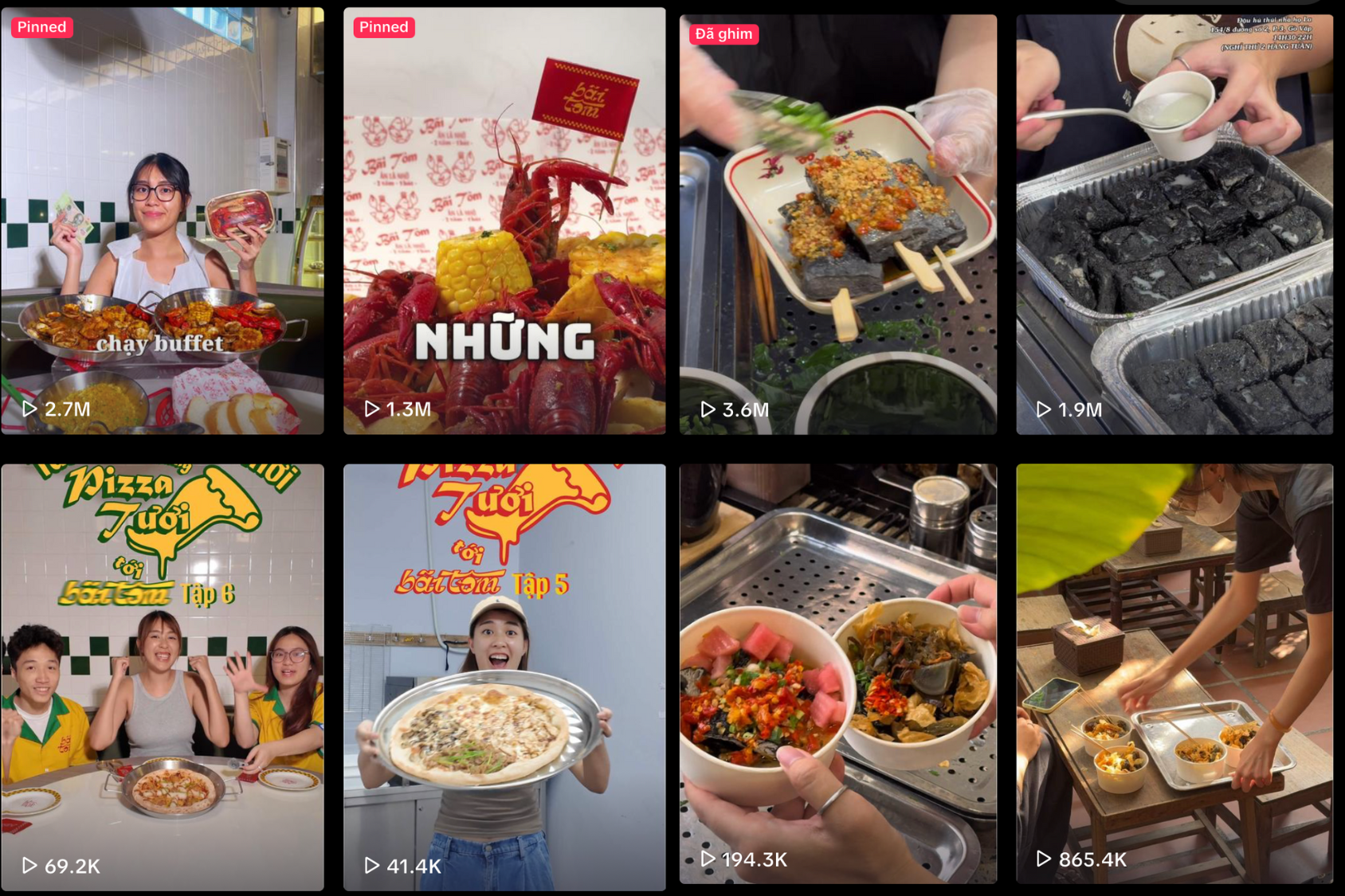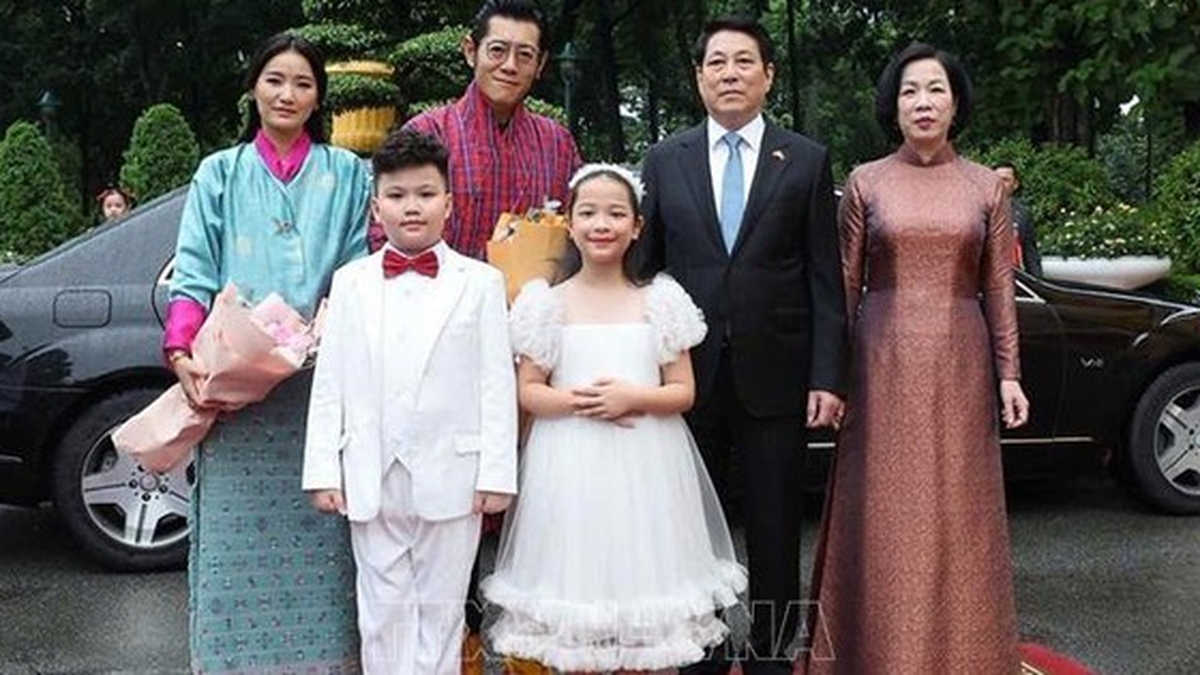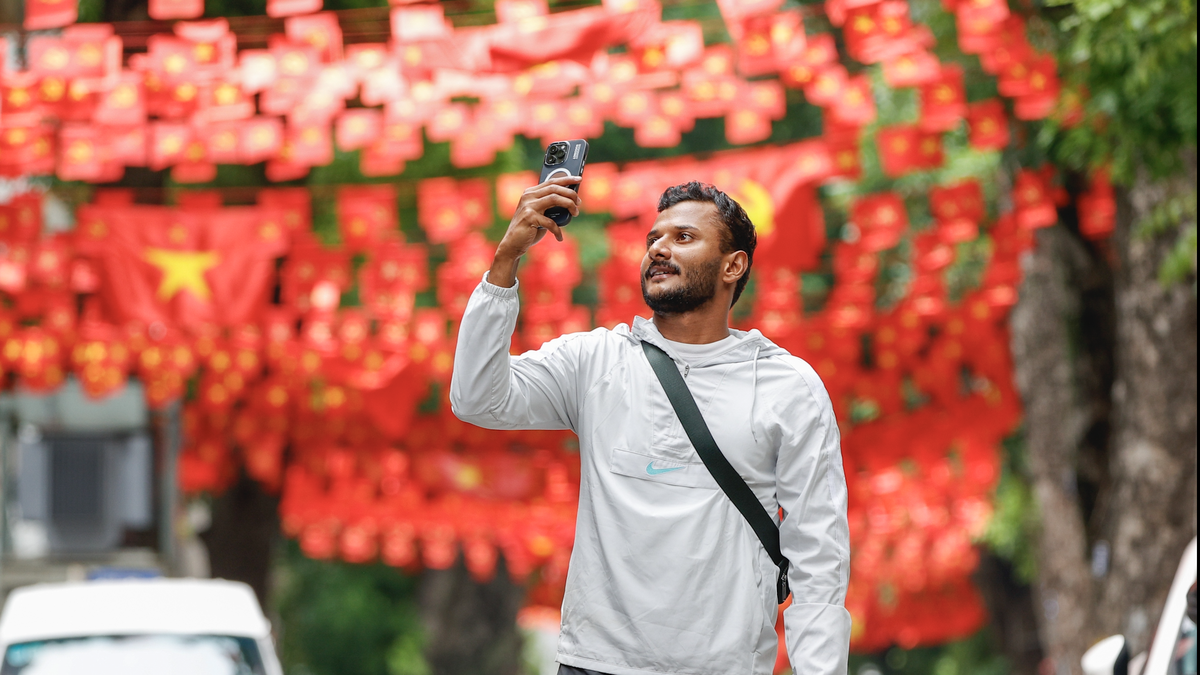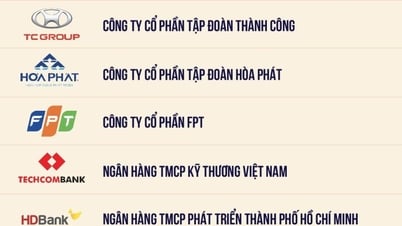Gen Z sells products or sells stories?
Not only are Gen Z (those born between 1997 and 2012) smart consumers, they are also actively reshaping the way digital businesses are conducted. With their phones in hand, they turn each video into a marketing campaign, combining sales and storytelling in a personal style.
Not relying on KOLs (Key Opinion Leaders) or traditional advertising, many Gen Zers build their own brands with their own creative skills. They are both owners and content creators - a new generation of entrepreneurs, flexible, proactive and masters of the business space on digital platforms.
Social networks are transforming from a pure entertainment channel to a “social commerce network” model, where users can discover products, find inspiration, and shop seamlessly on the same platform. In this space, shop owners often appear directly, sharing personal stories, production processes, or product usage experiences in an intimate way, instead of just providing information or traditional advertising.
This approach creates a sense of alignment between the brand and the potential customer, increasing trust and instant engagement. Associate Professor Dr. Nguyen Van Thang Long - Lecturer at RMIT University - likens this model to a modern version of “Son Dong Mai Vo”, but with the addition of a harmonious coordination between the seller and the user, all telling the same story.
A typical example is Bai Tom, a seafood restaurant in Hanoi founded by a group of young Gen Z people. Instead of spending a large budget on reviewers or traditional advertising, they created their own TikTok channel, introducing their dishes and recounting the entire startup journey, from the early days of setting up the restaurant, to when they encountered operational problems.

Videos created by the owner himself attract millions of views (Photo: Social Network).
The group representative shared with Dan Tri reporter: "We decided not to rely on reviewers or traditional advertising. Instead, we created our own TikTok channel, saving costs and being able to freely create in our own style."
On TikTok, the restaurant does not hesitate to show the audience both the real feedback from customers and how the restaurant handles it, the times when the "battlefield" broke down when customers rushed in, making the kitchen struggle to cope.
Instead of just polishing the image of the dish, the group chose to tell the story with everyday life slices, bringing positive energy. And this is also the reason why their TikTok channel quickly attracted hundreds of thousands of followers, turning Bai Tom into a familiar destination for young people in Hanoi.
In Ho Chi Minh City, the brand Dau Hu Nha Ho La of young man La Phuc Khang (born in 1998) is also a vivid example of the model of selling and telling stories at the same time. Not only stopping at selling strange dishes, Khang also filmed and edited videos to recount his entrepreneurial journey: from failed attempts at recipes, being complained by neighbors because of the distinctive smell of stinky tofu, to the scene of customers lining up in front of the shop.
A clip once reached nearly 2 million views overnight, making "The La Family" a phenomenon on social media and in the Gen Z culinary world.
The success of Nha Ho La shows that Gen Z does not need an unrealistically polished image. They like to see imperfections, because that is who people are, what real life is. And the more real the story is, the easier it is to spread.

Phuc Khang started his business with stinky tofu (Photo: NVCC).
If in the past, doing business required a location and a large amount of capital, now with just a phone and a rich imagination, Gen Z can set up a "store" in the digital space.
Not only popular in Vietnam, the model of combining personal business and content creation is also spreading globally. In the US, Emma Chamberlain - Gen Z video content creator and co-founder of Chamberlain Coffee is a typical example.
Through her casual coffee-making videos, she naturally integrates her products, turning personal habits into effective marketing tools. As a result, the brand quickly attracted attention on social media and appeared in many major retail chains in the US.
TikTok, Instagram, and Facebook are becoming new distribution channels where each short video can connect directly with customers. In the 15- to 60-second time frame, sellers can introduce products, build brands, and express personal style.
Livestream: storytelling and direct sales
A typical form of “storytelling and selling at the same time” is livestreaming. On platforms like TikTok and Shopee Live, Gen Z turns each livestream into a direct exchange. They not only close deals but also answer questions, share tips on choosing, or tell everyday stories. That way, the brand story becomes more vivid, real, and engaging.
However, to make a livestream successful is not simple. Truc Dao - a Gen Z born in 2001 with more than 600,000 followers on Tiktok said: “Livestreaming sounds easy, because it doesn’t require much investment. All you need is a phone and a few eye-catching products. But people only see the outside, but when you do it, you know how difficult it is.”
Dao shared that for the livestream to be effective, she had to talk non-stop for 2-3 hours, replying to comments to interact with customers. It sounds normal, but maintaining energy, being both convincing and natural, and skillfully "closing the deal" without making viewers uncomfortable, is the biggest challenge.

Truc Dao - a gen Z with more than 600,000 followers on Tiktok (Photo: Social Network).
She added that there are hundreds of livestreams airing every day, so it is quite stressful to make viewers stop for more than the first 5 seconds. But even if viewers stay longer, it is still necessary to change the content, script, and even improvise according to the situation to avoid boredom.
“Not every time I go live, people watch. There are days when only a few people watch, I talk almost to myself, it's extremely disappointing,” Dao said.
For her, livestreaming is not simply about selling, but about finding ways to make the audience want to hear her speak, like to hear her speak, and believe what she says. That is also the core of the Gen Z model: selling through stories and personal energy.
So, from a TikTok video to a livestream, Gen Z is following the same formula: using authentic content to drive emotion, and then letting that emotion convince the buyer. They’re not just selling a product, they’re selling a lifestyle. And that’s what this generation trusts more than any advertisement.
Social networks become "shopping assistants" for Gen Z
Not just a playground for entertainment, social networks have now become a powerful "shopping assistant" for Gen Z. According to data from Statista, more than 50% of Gen Z have shopped via social networks, of which 53% made purchasing decisions based on video reviews on digital platforms. This shows that Gen Z's shopping is not just about features, but also a journey to learn about emotions, stories, and lifestyles.
Associate Professor Dr. Nguyen Van Thang Long - lecturer at RMIT University Vietnam - explained that consumers often make decisions based on two systems of fast and slow thinking. Fast thinking is emotional and automatic, often appearing when consumers are attracted by images, emotions, or related stories. In contrast, slow thinking requires careful analysis, comparison, and consideration, often used when approaching new or high-value products.
For Gen Z, emotional factors play an increasingly dominant role. They are willing to spend money on products that express their personality and lifestyle, rather than based on basic needs.
The expert believes that storytelling in sales is not new, but with Gen Z, authenticity and personalization in content are becoming the key for brands to connect and convince young people.
“If the brand story can create a sense of understanding, be named and suggest the right needs, Gen Z will easily make decisions instinctively,” Mr. Long commented.
This is driving a dramatic shift in sales, from quick sales to investing in storytelling, personalizing experiences and building emotional connections. “This is a sign of consumer maturity, forcing brands to behave more professionally to retain customers for the long term,” he said.
Don't tell stories in a conventional way, tell them from your own perspective.
Master Le Anh Tu, CEO of iGem Agency, lecturer of the Faculty of Public Relations - Communication, University of Economics and Finance, Ho Chi Minh City (UEF), believes that brand owners creating their own content to tell their brand stories is a very positive signal.
Master Le Anh Tu believes that the most important thing is to make the brand unique, not to be confused with anyone else, from color, style to storytelling. "In fact, young people of Gen Z now understand very well about brand building," he commented.

Authenticity and personalization are key to convincing young people (Photo: Freepik).
When telling a story, it is necessary to skillfully incorporate the brand's unique mark so that viewers can feel the professionalism and difference. He also emphasized that following trends is not wrong, but do not copy others exactly. Each person should tell the story with their own personality, story and perspective.
“When you do that, the content is not only attractive but also has its own unique style, difficult to blend in with a series of other sales channels,” said Master Tu.
In addition, Associate Professor Dr. Nguyen Van Thang Long believes that storytelling is not always effective. The story needs to ensure three factors: authenticity, uniqueness and a clear connection to product benefits. “If it is fabricated or exaggerated, Gen Z - who are very perceptive and wary of inauthentic content - will easily recognize it and turn away,” he said.
According to Mr. Long, not all products are suitable for storytelling. With high-tech or business-oriented products, customers need clear information and technical data rather than emotions. And when many brands apply the same storytelling formula but lack depth, the effectiveness will gradually decrease due to boredom.
“It's not about telling the story, it's about telling it at the right time, to the right person, and in the right way,” he stressed.
Gen Z - a dynamic, creative and daring young generation is gradually making its mark on the Vietnamese startup ecosystem. With a spirit of not being afraid of change, many young people have boldly started businesses in new fields, requiring breakthrough ideas and perseverance.
However, the path to starting a business is never easy, especially when they face barriers in terms of capital, management experience or pressure to maintain cash flow in a fiercely competitive market.
The series "Gen Z Startups" not only outlines an overall picture of the trends and reality of startups among the young generation, but also depicts inspiring real-life stories - young people who dare to think differently, do differently, and are willing to stumble to grow up.
The goal is to spread a positive message about the spirit of innovation, lean but sustainable, encouraging young people to dare to try - dare to fail - dare to stand up.
Each shared story is not only a valuable lesson for the startup community, but also contributes to motivating and inspiring Gen Z to continue to rise up and contribute to the socio-economic development of the country.
Source: https://dantri.com.vn/kinh-doanh/gen-z-khoi-nghiep-chot-don-am-am-tu-viec-ke-chuyen-20250804074316956.htm























![[Photo] General Secretary To Lam and President Luong Cuong attend the handover ceremony of the Presidential Office Headquarters](https://vphoto.vietnam.vn/thumb/1200x675/vietnam/resource/IMAGE/2025/8/19/a37cfcbd301e491990dec9b99eda1c99)

![[Photo] Close-up of the first International Financial Center building in Ho Chi Minh City](https://vphoto.vietnam.vn/thumb/1200x675/vietnam/resource/IMAGE/2025/8/19/3f06082e1b534742a13b7029b76c69b6)



![[Photo] Prime Minister Pham Minh Chinh attends the opening ceremony of the National Data Center](https://vphoto.vietnam.vn/thumb/1200x675/vietnam/resource/IMAGE/2025/8/18/b5724a9c982b429790fdbd2438a0db44)










































































Comment (0)